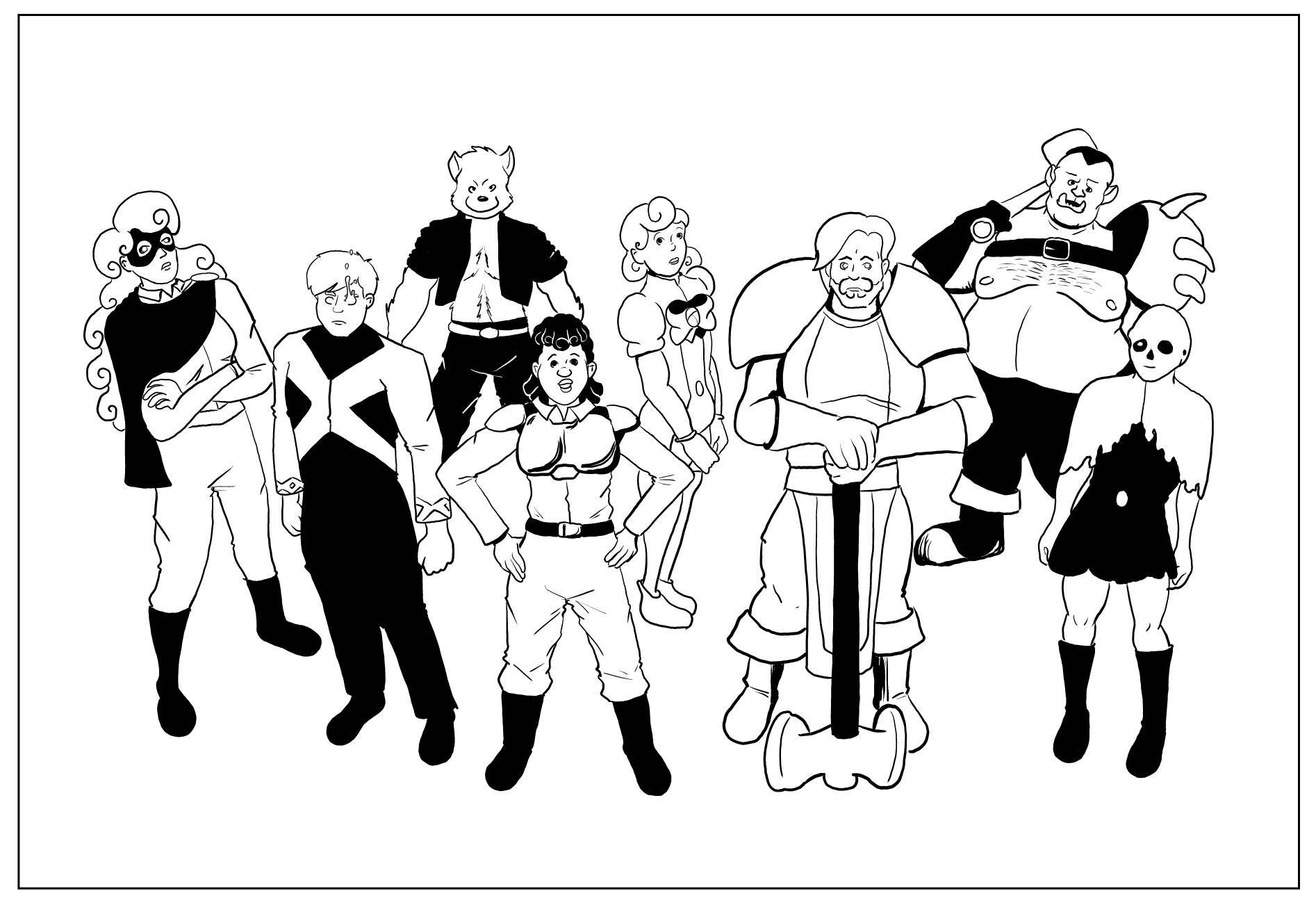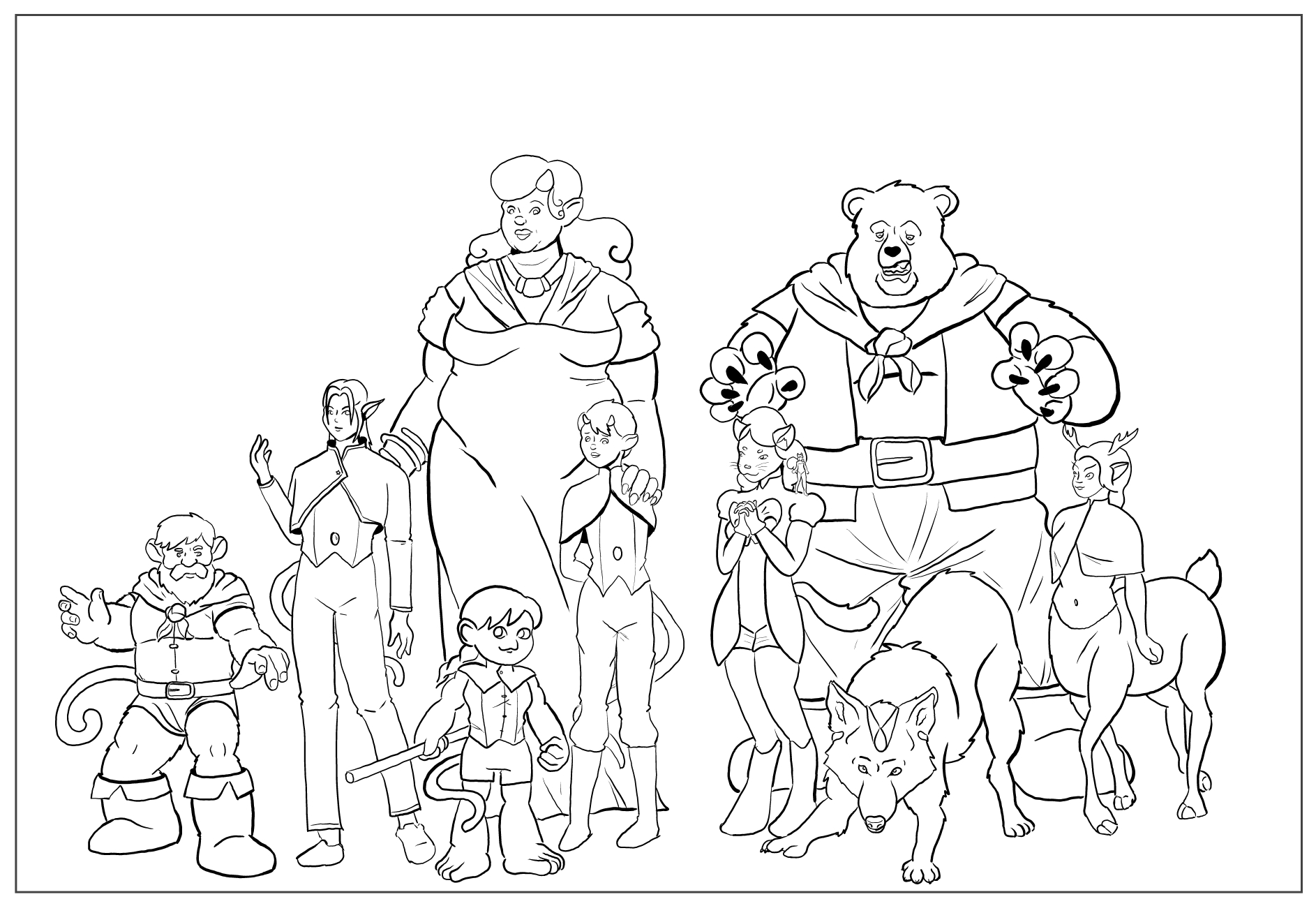I have tentative campaign rules for Gemfarers, which required coming up with recruitment rules. How best to give players a meaningful choice without stifling them? I settled on grouping everyone into three groups (because the game uses six-sided die): Humans, Fae, and Other. This provided for random chance but still allowing the player some control over how their army looked. Here's all the freaks of Gemfarers (which coincidentally exist in Around Bear Corner, since they share a universe).
Humans (and derivatives)

Humans (Earth): The people of Earth. They recently learned about gemfaring after the Fae Realm was rediscovered in the 90s. According to faeries, the magic of Earth humans tastes different. Faeries can tell which humans were born on Earth by their scent.
Humans (Fae-born): Humans who were born in the Fae Realm. These humans are descended from humans who either wandered into the Fae Realm or were kidnapped. There is no real difference between them and their Eath-born counterparts, except how their magic "tastes" to faeries.
Human Furries: Unlike Faerie furries, who get their forms from a god, human furries rely on gem technology. Faeries do not consider them to be real furries, and treat them as they would any other humans.
Mutants: The ESPers of Gemfarers. They have inborn magic abilities similar to those granted by gems. For millennia, they were rare, but the event that caused the rediscovery of the Fae Realm in the 90s also increased the birthrate of new mutants.
Numen: A small, isolated ethnic group where everyone is a mutant. Inspired by Marvel's Inhumans, because as annoying as they were I always liked the idea of a society of super-jerks. All numen wear masks, another reference to the Inhumans.
Godlings: Long-lived, divinely-touched humans created to serve the gods. They live in the Fae Realm in a Warcraft-inspired region. A few of them are active on Earth as superheroes because why not?
Orcs: I took a long time figuring out how to add orcs to gemfarers. Eventually I made them a cursed group of humans. They live in the Warcraft-inspired region and are few in number. Their culture is very Scottish.
Lichlings: The counterpart to Warcraft's forsaken. They are created by daemons from human corpses, but are very much alive and not rotting. Their faces resemble skulls, with sunken, empty eye sockets. A small, glowing gem sits in one of the eye sockets.
Faeries

Faeries: Horns, pointy ears, and tails. Faeries feed off magic (and food). They were the first gemfarers. Faeries do not have names for genders and instead use "orii" (smaller) and "ogre" (larger). These words can also apply to the two types of faeries. The normal-sized are orii, while the rare few who choose to magically increase their size are ogres. Ogres are powerful gemfarers who absorb enough magic and grow to nine feet tall. Ogres are usually fat, but rather than the fat organ, most of their mass comes from a magic-absorbing organ that conveniently behaves exactly as fat would on a similarly-proportioned humanoid that wasn't scaled up. For narrative convenience.
Furries: Furries come in a variety of forms, which conveniently translate to the English anthro, feral, taur, naga, kemonomimi. One of the rules of Gemfarers is that names should be simple whenever possible, so why not use the real-life furry terms? Most furries follow the goddess Ligra, a tiger-headed serpentine dragon. Furries can be ogres, and a rare few are pixies, a very orii form that is only a few inches tall. Pixies are mostly small religious sects, as it is very hard to live at that size.
Elves: An off-shoot of faeries covered in velvet fur and with three fingers and shorter, monkey like tails. Elves adapt to their environment. You can usually tell where an elf is from by their fur or unique features.
Duegers: Basically dwarves, with mouse-like features. Like all faeries, they can be ogres, sometimes simply increasing their height to a respectable 6 feet, sometimes more. Very rarely, a dueger will grow themselves to eighteen feet, becoming sedentary mountain kings.
Gnomes: Orii monkey people. They can often be found living with dwarves, but also far from civilization or in Lichling lands.
